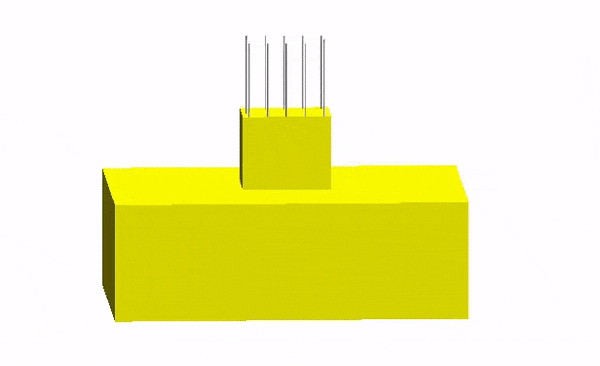
Footings designs to resist the shear force causes by imposing loads. Footings constructs in open space and known as open foundations. It provides with natural slopes on all sides. It employs for a depth up to 5 m. The base of the structure enlarges or spreads to provide individual supports. These type of foundations provides for the structure of moderate heights built on the dry ground.

Types of footings
- Wall Footing
- Isolated footing
- Combined footing
- Inverted footing
- Continous footing
- Cantilever footing
- Grillage footing
1. Wall Footing
Footings are of simple or stepped on wall footing. The base course of the footings is of concrete or other material. These footings employ only for simple structures. It has one projection beyond the width of the wall on sides. The width of the concrete base is equal to twice the width of the wall. In single footings, the brick footing is widely employing.
2. Isolated or column footing

It uses to support individual columns. It is in step or has a projection in the concrete base. In heavy loads, steel reinforcement provides in both directions in concrete bed. An offset of 15 cm provides on all sides of the concrete bed. In brick masonry, offset is of 5 cm on all sides in regular layers.
3. Combined footing

A combined footing supports more columns in a row. The combined footing is of rectangular shape if both the column carry equal loads. In unequal loads it of trapezoidal shape. It is rigid and resisting on the homogeneous soil.
4. Inverted arch footing
Inverted arch footing use on the soft soil to reduce the depth of foundation. Loads above an opening transmit from supporting walls through inverter arches of soil. In this type of footing, the end columns are stable enough to resist the outward pressure causing by arch section.
5. Continuous footings
In this type of footing, a single continuous R.C. slab provides a foundation of more columns in a row. It is suitable for locations liable to earthquake activities. This prevents differential settlements in structure. To have a better stability deeper beam constructs in between columns.
6. strap or cantilever footing
It consists of more individual footings connects by a beam known as a strap and known as cantilever footing. This type of footing uses where the distance between the column is greater. It serves to transfer column loads on the soil with equal and uniform soil pressure.
7. Grillage footing
This type of footings uses to transmit heavy loads from steel columns to the soils having low bearing power. This type of arrangements avoids deep excavation. And provides a necessary area at the base to reduce the intensity of pressure. Grillage footings are of roll steel joists and name as grillage beams to providing in single or double tires.


Leave a Reply